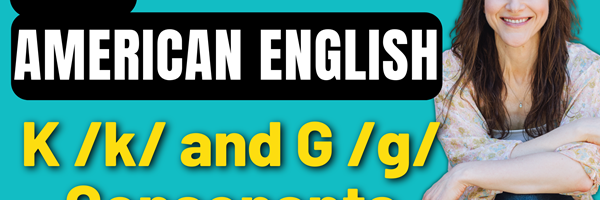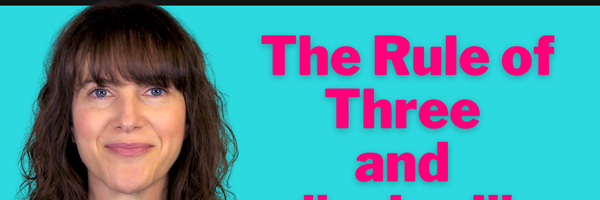(Video Transcript)
Pear, bear
Rope, robe
Plush, blush
Let’s learn how to pronounce the P and B consonants in American English.
How to pronounce the P /p/ and B /b/ consonants: American accent training
The P and B consonants are very similar.
They share the same lip, tongue, and jaw placements, which means they are made in the same place in the mouth. Watch as I say the two sounds, and you’ll notice that my mouth is in the same position for both sounds.
P, B, P, B
They also share the same type of air release or manner. These consonants are called stop consonants, which means the airflow is stopped somewhere along the vocal tract as you pronounce them. For the P and B consonants, the airflow is stopped where the lips come together. Then the air is released as you open the mouth.
P, B
But where they differ is voicing. The P consonant is a voiceless consonant, which means it is made with just air passing through the vocal cords and out of the mouth. The vocal cords are turned off as you say this sound.
P.
The B consonant is a voiced consonant. This means the vocal cords are turned on as you say this sound, and you should feel a vibration in the throat when you say it.
B.
When stop consonants come at the end of a syllable or word or at the end of a thought group, sometimes native speakers don’t release the sound. For the P and B consonants, this means the lips come together to make the sound, then they remain closed at the end of the sound. This is called an unreleased consonant.
This happens in a word like cupcake. Native speakers typically hold the P in cupcake.
Cupcake. Cupcake.
It’s not cup-uh cake, with a released P, but cupcake.The airflow is only released when you pronounce the next sound, the K in cake.
To pronounce the P and B consonants, the lips come together to stop the airflow. A small amount of air pressure builds up behind the lips. Then the air is released as you open the lips. This release of air is called aspiration.
P, B.
The tongue does not really participate in these sounds, so the tongue can be relaxed or in a neutral position.
Watch an animation of the P and B consonant sounds. This animation was created from actual videos of a real person pronouncing the P and B sounds. The animation shows the side view of the person's face, and I slowed it down to half speed. First you’ll see the P consonant sound. Watch how the lips come together to make the sound.
Now the B consonant. Notice the same mouth placement, but you’ll hear voicing or vocal cord vibration.
When making the B consonant, you should feel vibration in two places: in the throat and at the point where the articulators touch, which is where the lips come together. This is the vibration of the air as it exits the mouth.
The P consonant does not have vibration because it is a voiceless sound, so the vocal cords are turned off as you say it.
Let’s take a closer look at the P and B consonants.
The P /p/ and B /b/ consonants: Up close and in slow motion
Here is the P sound in isolation. Notice how the lips come together at the beginning of the sound. Then the lips open, and the air is released.
Now the word play. Again, you’ll see the lips come together at the beginning of the P sound, then they open to release the air.
Now the word table. You can’t see the vibration, but since this word has the voiced B consonant, the vocal cords are vibrating as I say it, and there is a secondary vibration where the lips come together, just before the lips open to release the air and the sound.
P /p/ and B /b/ consonant practice
Let’s practice a few words together. Say the words with me. We’ll start with the P consonant.
Please, P, please
Approach, P, approach
Top, P, top
Now the B consonant. Feel the vibration of the vocal cords in your throat and where the lips touch. The vibration is strongest just before the lips open to release the air and the sound.
Bake, B, bake
Table, B, table
Grab, B, grab
Thanks so much for practicing the P and B consonants with me. I hope this video was helpful! But we don’t have to end the practice here - let’s keep working together! Check out the additional practice videos of the P and B consonant sounds in English Pro, my comprehensive online accent training community. The details on how to enroll in English Pro are in the description below. Thanks, and have a great day!
And I'd love to hear from you - contact me to learn how we can work together to perfect your American English pronunciation!



